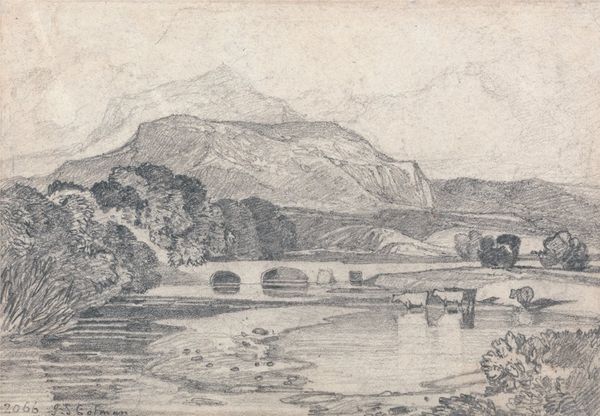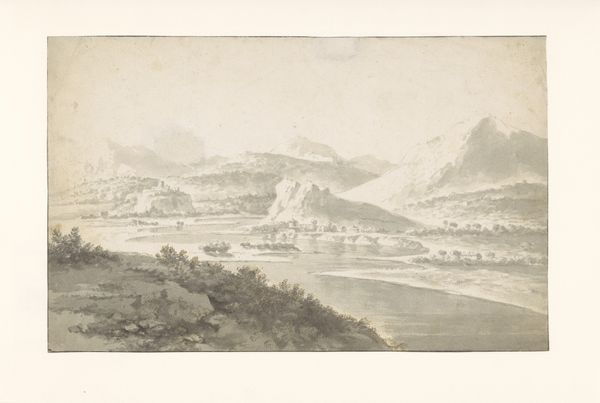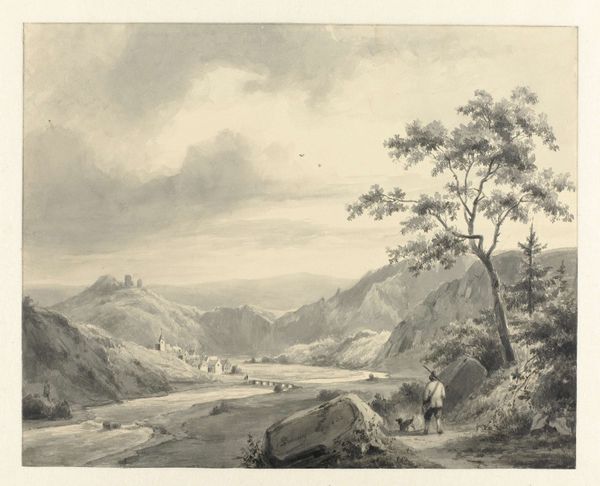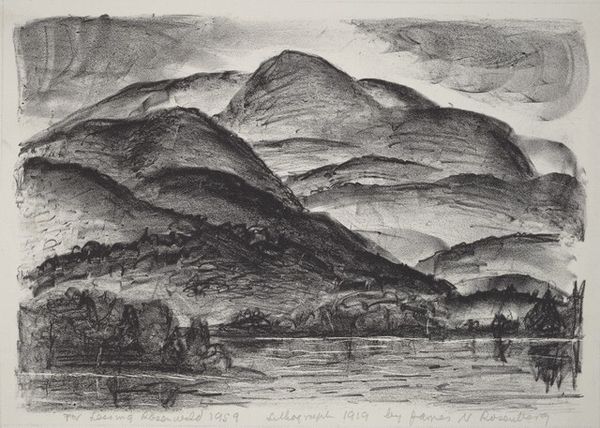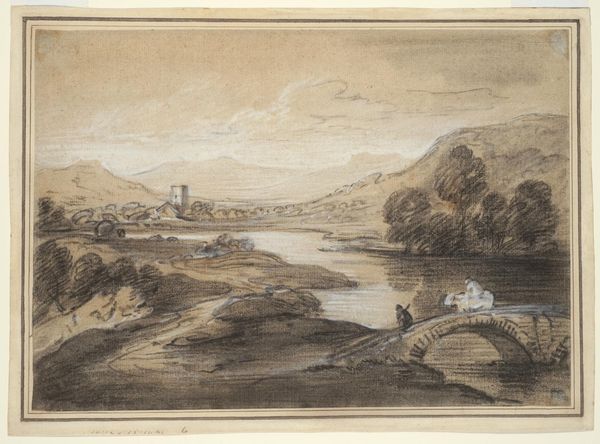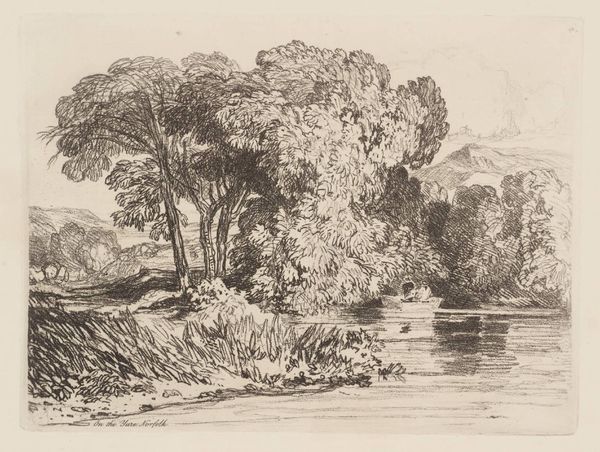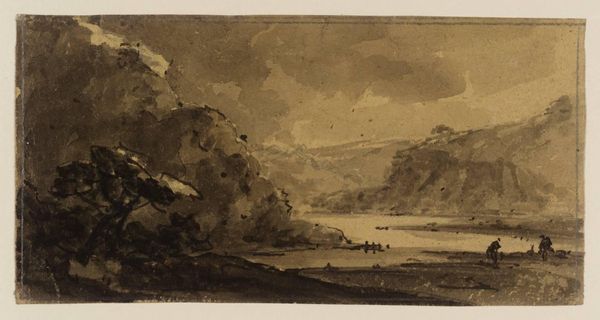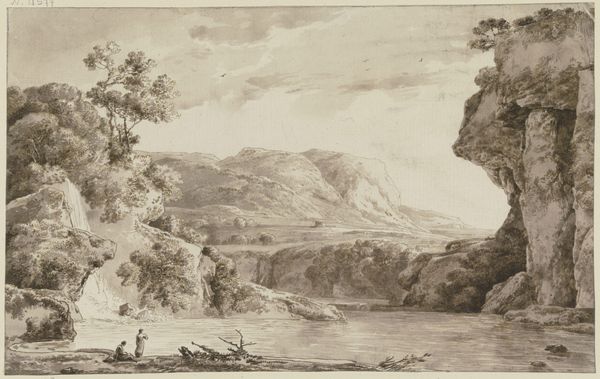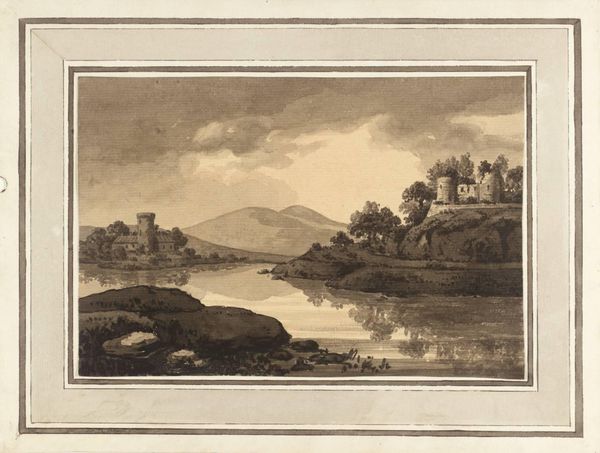
Dimensions: support: 165 x 237 mm
Copyright: CC-BY-NC-ND 4.0 DEED, Photo: Tate
Curator: Here we have Alexander Cozens' "River, Hills and Road" from the Tate Collections. What strikes you first? Editor: The stark contrast—it feels like a dreamscape caught between light and shadow. Almost theatrical in its composition. Curator: Cozens was known for his "blot" technique. He believed that imaginative landscapes could emerge from abstract ink blots. See how the river guides your eye, almost like a classical stage set. Editor: Yes! Water as passage, but also a symbol of constant change—reflecting the fleeting nature of perception itself. The ruined building speaks of time's passage too. Curator: A good point. It’s a reminder that even the most picturesque scenes carry echoes of impermanence. Editor: I feel it, a very elegant rendering of that bittersweet truth. Curator: Cozens invites us to find our own stories within the blots. Editor: Leaving space for each viewer's own mythology. That's quite a gift.
Comments
tate 8 months ago
⋮
http://www.tate.org.uk/art/artworks/cozens-river-hills-and-road-t08865
Join the conversation
Join millions of artists and users on Artera today and experience the ultimate creative platform.
tate 8 months ago
⋮
Cozens has loosely sketched this scene with a soft pencil before adding the grey washes. Fine pen and brown ink lines have been drawn over the wash to define the distant hills using short dashes and rounded strokes, which contrast with the broad parallel line work used in central and foreground areas. Cozens has chased his pen and brown ink lines with a dilute brown ink wash, notably through the left section which has caused the denser pen lines to 'bleed' in areas. Gallery label, August 2004
